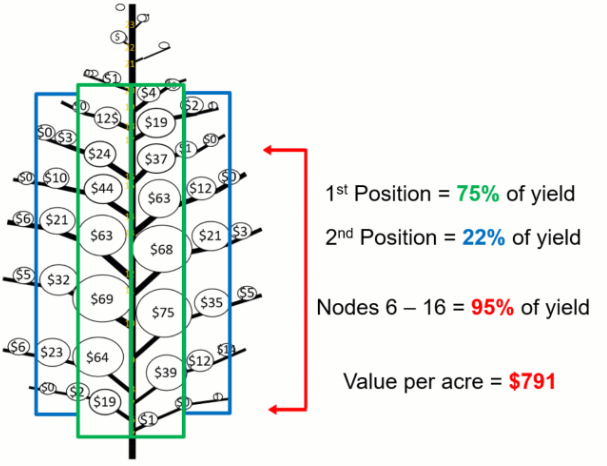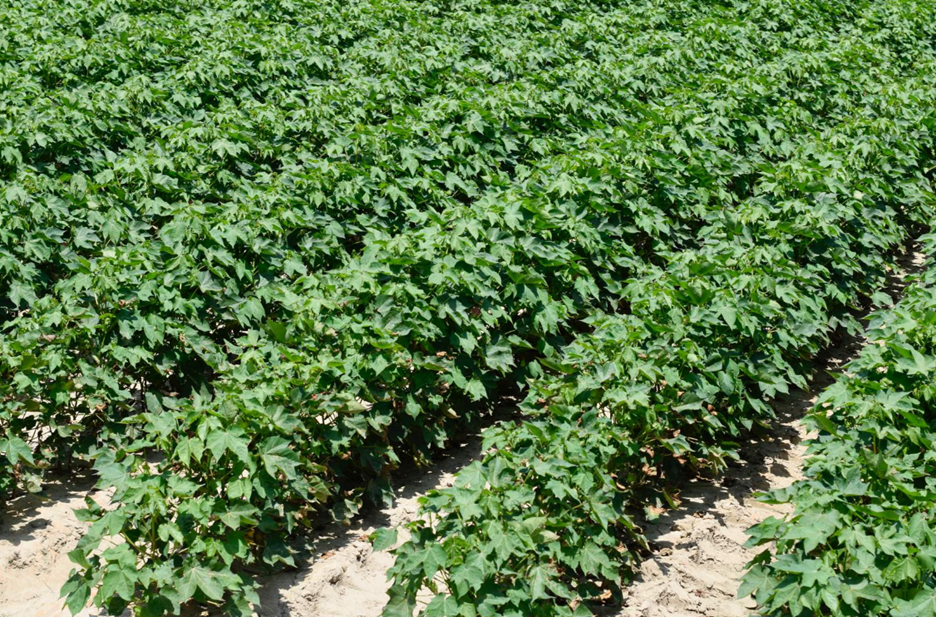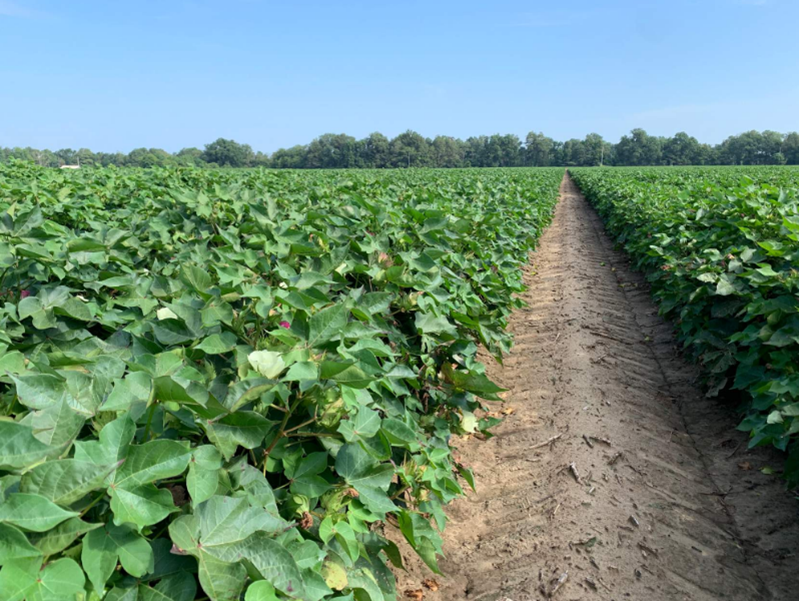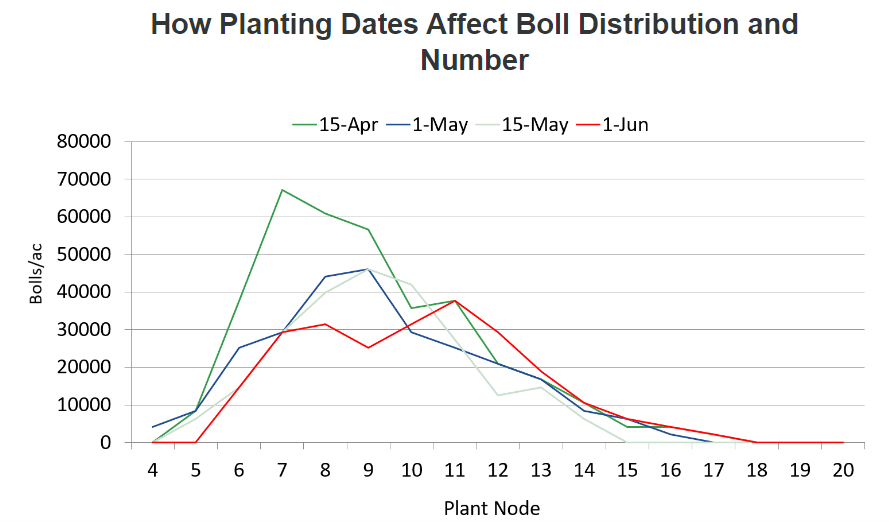Fruiting Site and Boll Development in Cotton
PhytoGen agronomists explain fruiting and boll development.
PhytoGen agronomists explain fruiting and boll development.
Cotton has a distinctive and predictable fruiting pattern. While it varies by variety and environment, the first, second and third positions contribute approximately 60, 30, and 10 percent of the total yield, respectively. The diagram below represents yield contribution by position in a Clemson University study where 97% of the overall lint yield came from the first and second position bolls. Not only is the yield contribution decreased at distal positions, but the lint quality also tends to decrease as fibers are less mature.

Dense stands and excess nitrogen or irrigation promote vegetative growth and large plants. The shading of lower bolls and leaves reduces the carbohydrate available to mature these bolls. Ultimately, this can deteriorate fiber quality witnessed as lower micronaire and fiber length. Under humid conditions, another impact of shading is significant yield loss due to the promotion of pathogen development and subsequent boll rot as well as hard lock.
 |
 |
The development of a cotton plant begins slowly during emergence and root growth. Cotton fiber development begins to appear about four to five weeks after planting, with the formation of squares in the terminal of the plant. Once cotton fruiting begins, sympodial (fruiting) branches tend to be are produced at each successive node on the main stem. Vegetative growth greatly accelerates during canopy formation, flowering, and boll development, and but substantially slows during the boll maturation phase when assimilates are disproportionately allocated to the developing bolls.

Find information on nematode management and more in the PhytoGen Cottonseed Agronomy Library.